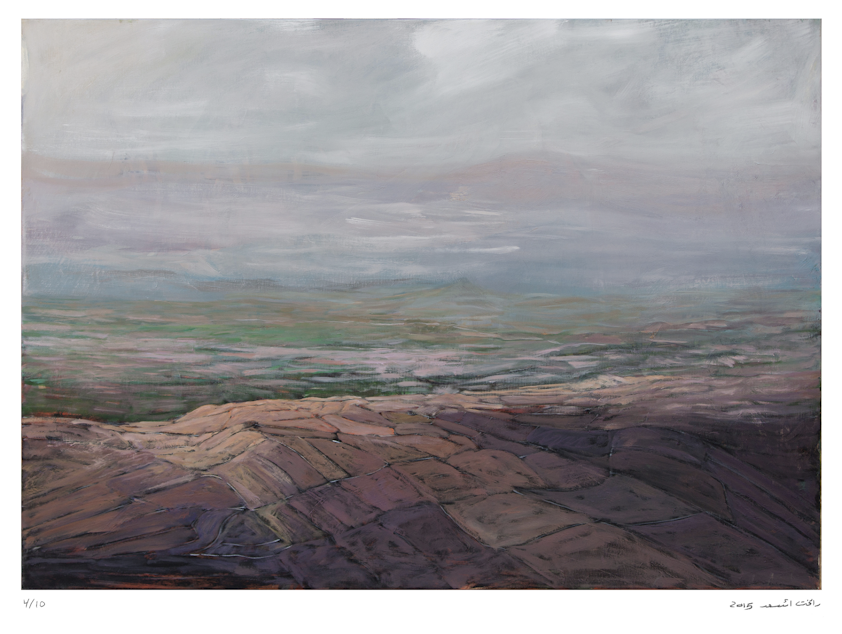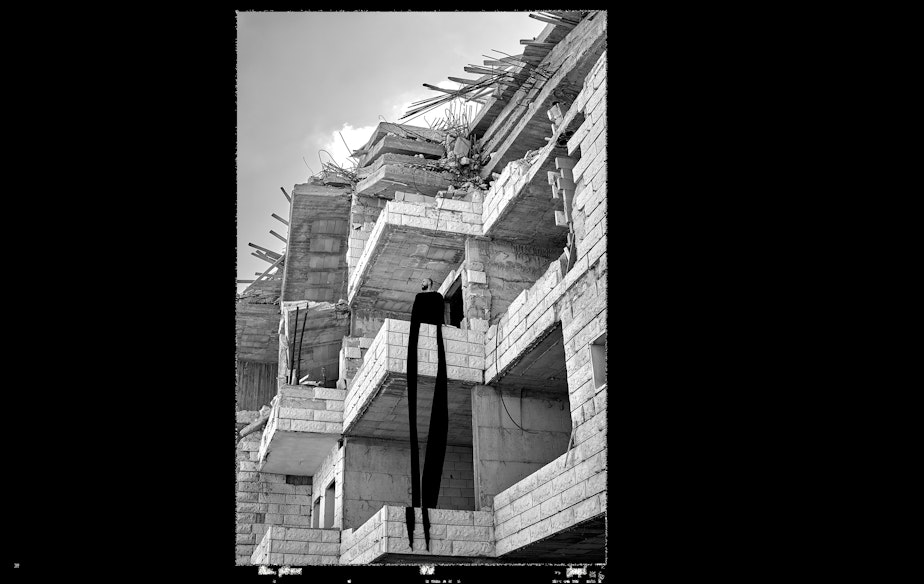PHOTOS: You can't look away from this bold, modern Palestinian art at Mercer Island gallery

In the face of ongoing violence, two Palestinian artists say they have turned to their craft as a creative outlet, as well as a social responsibility.
At the Mercer Island "SZ Gallery," curator Suzanne Zahr has brought together the works of 12 artists for a show she calls "We are human. We are hopeful. We are hurting. We are Palestine."
Zahr, who's also an architect, says she brought together this exhibit to amplify Palestinian voices and experiences.
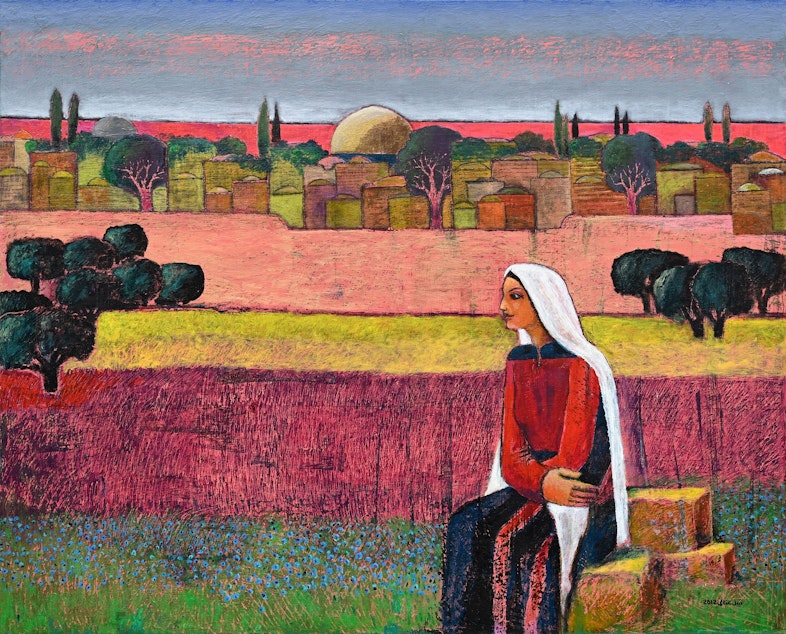
Sponsored
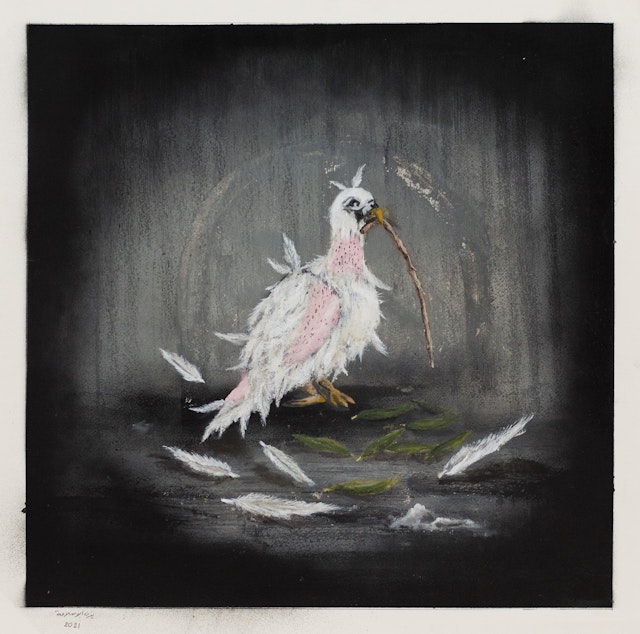
Two of those artists are Fuad Alyamani and Yazan Abu Salameh. Both live in the West Bank.
Alyamani says his portraits in the gallery focus on the impact capitalism has on Palestinians. In a piece called, “Contrast 3,” there is an oversized disposable coffee cup looming over a man wearing a traditional Palestinian headscarf, called a keffiyeh.
Alyamani says his art serves as an outlet to comprehend his life growing up in Ramallah.
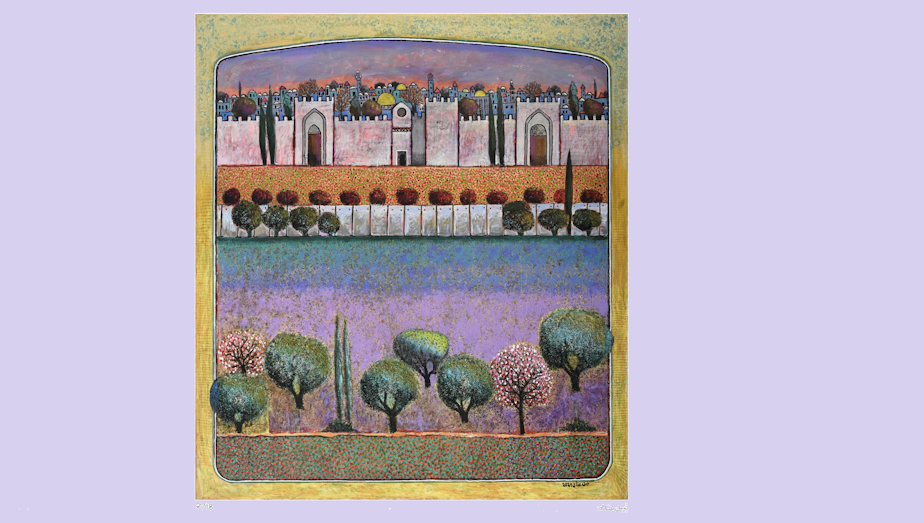
Sponsored
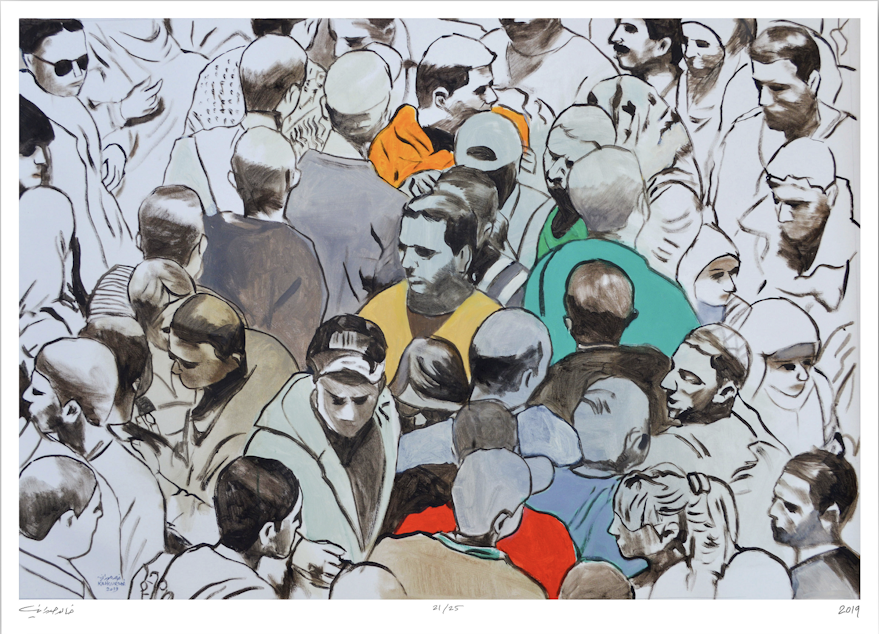
It’s also how he reflects on life in Ramallah now.
"It's a way to help myself to understand myself," he says. "Because at some point ... you can't live, you can't talk with people, you can't walk on the street. And this way, it helps me to remember myself again, and to take this heaviness out."
Salameh says he agrees with Alyamani, and his art is also a way for him to understand his life and this world.
Sponsored
It’s a part of what makes him human.
"I do art because that's what I can do, and that's what I can feel, and that's what I can say," Salameh says. "All of my art now has changed because this world — it's changed a lot, a lot, a lot, a lot."
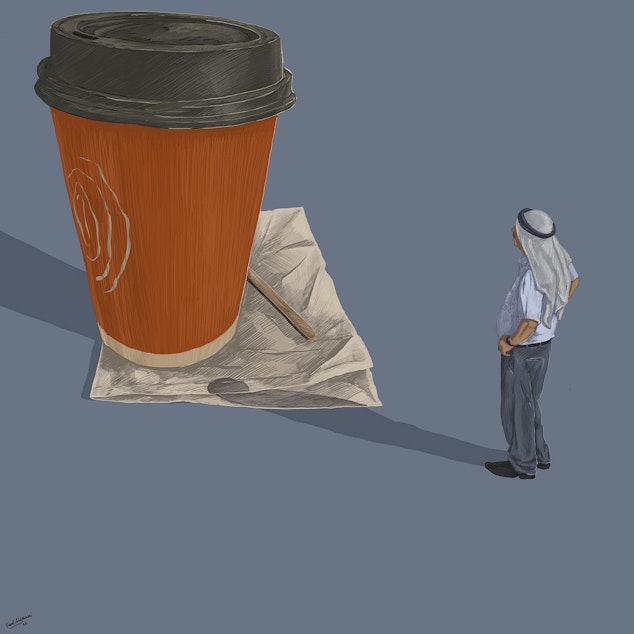
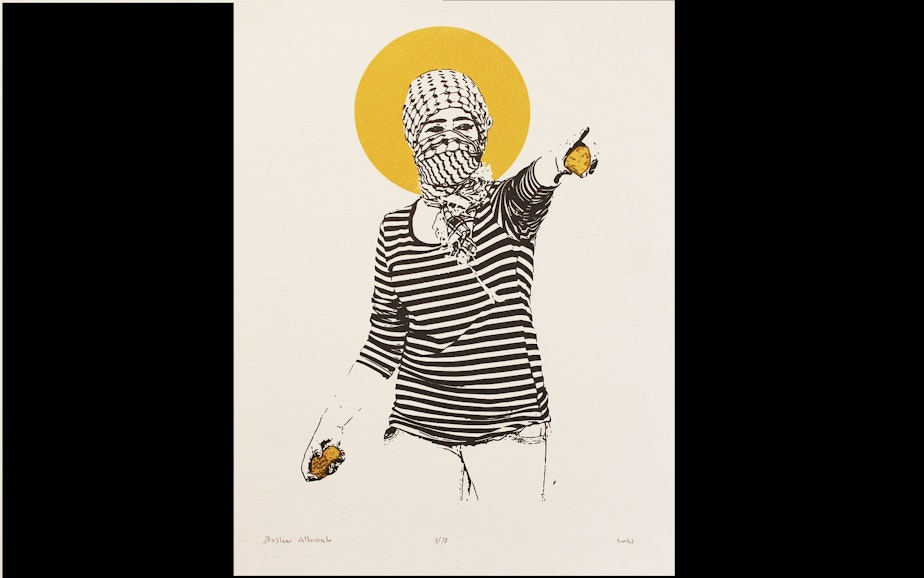
Sponsored
Both artists say their art is political, because their lives are. They can’t separate what’s happening to them and their families from the work they create.
They also note that they aren’t making art to get into galleries or be famous. Rather, they’re doing it as a way to process what’s happening, and as a way to reach other people — not just Palestinians.
They say they feel a responsibility to change the narrative, and by sharing their feelings and experiences through art, they hope they can change how people think about Palestine.
This show was was done in collaboration with a curator named Yousef Hussain, who runs in the Zawyeh Gallery, in Ramallah.
Zahr, who is Palestinian herself, says that when she stands in her gallery, the art feels like poetry — describing the beauty, and resilience, and strength of the Palestinian people.
Sponsored
As the Israel-Hamas war rages on, it's a poem she says she felt was important to bring to Mercer Island.

